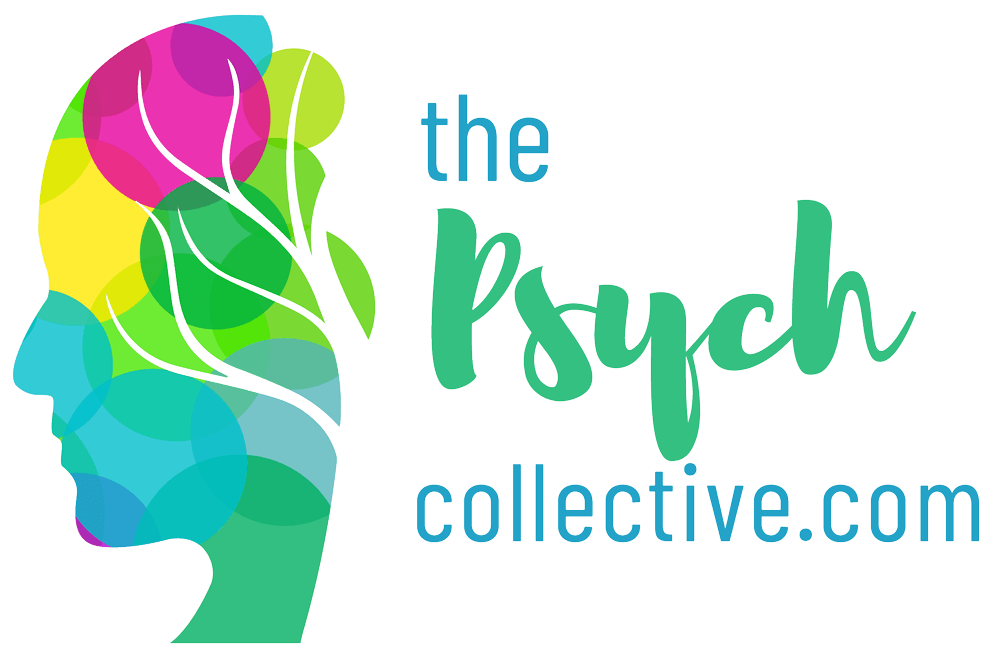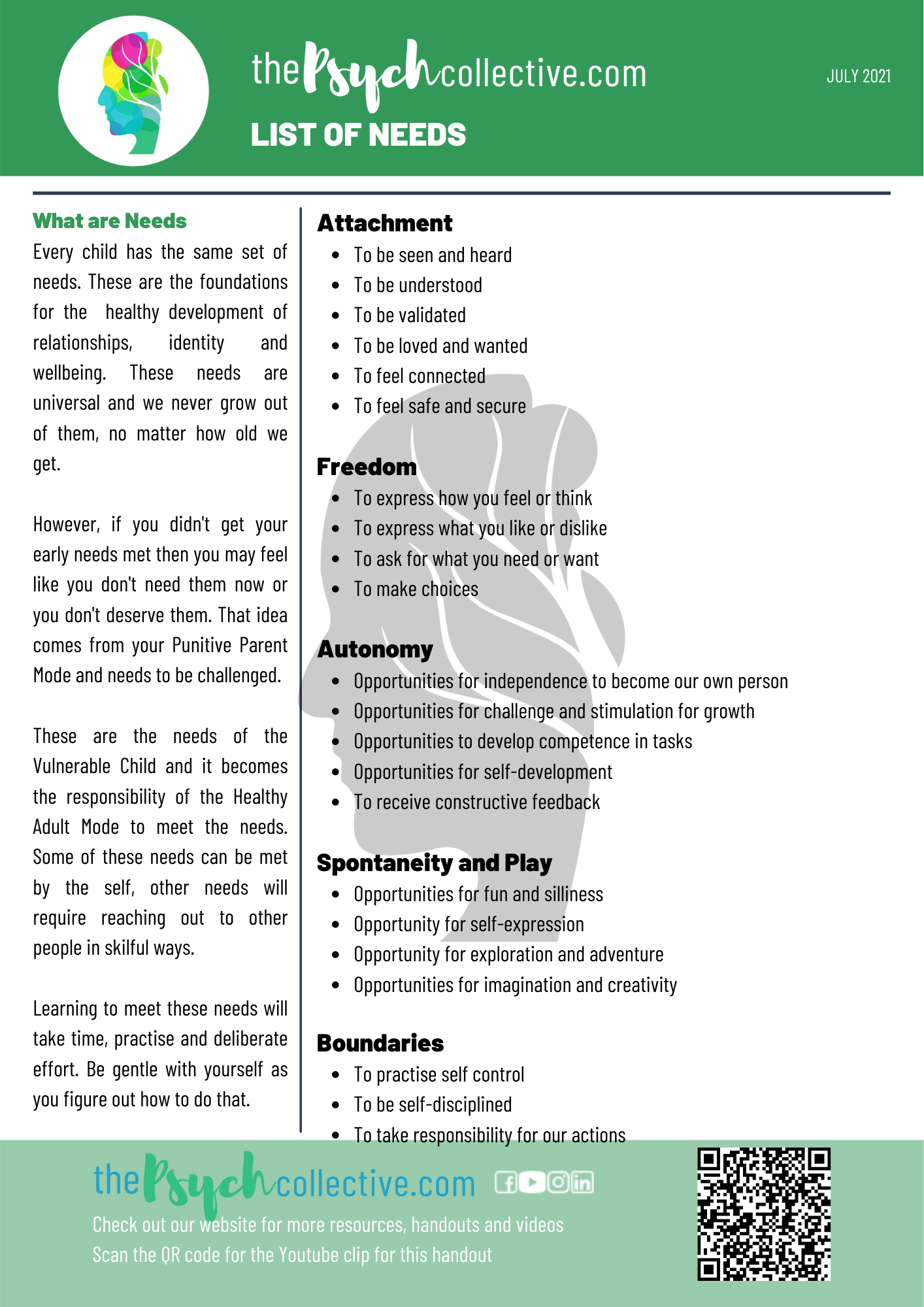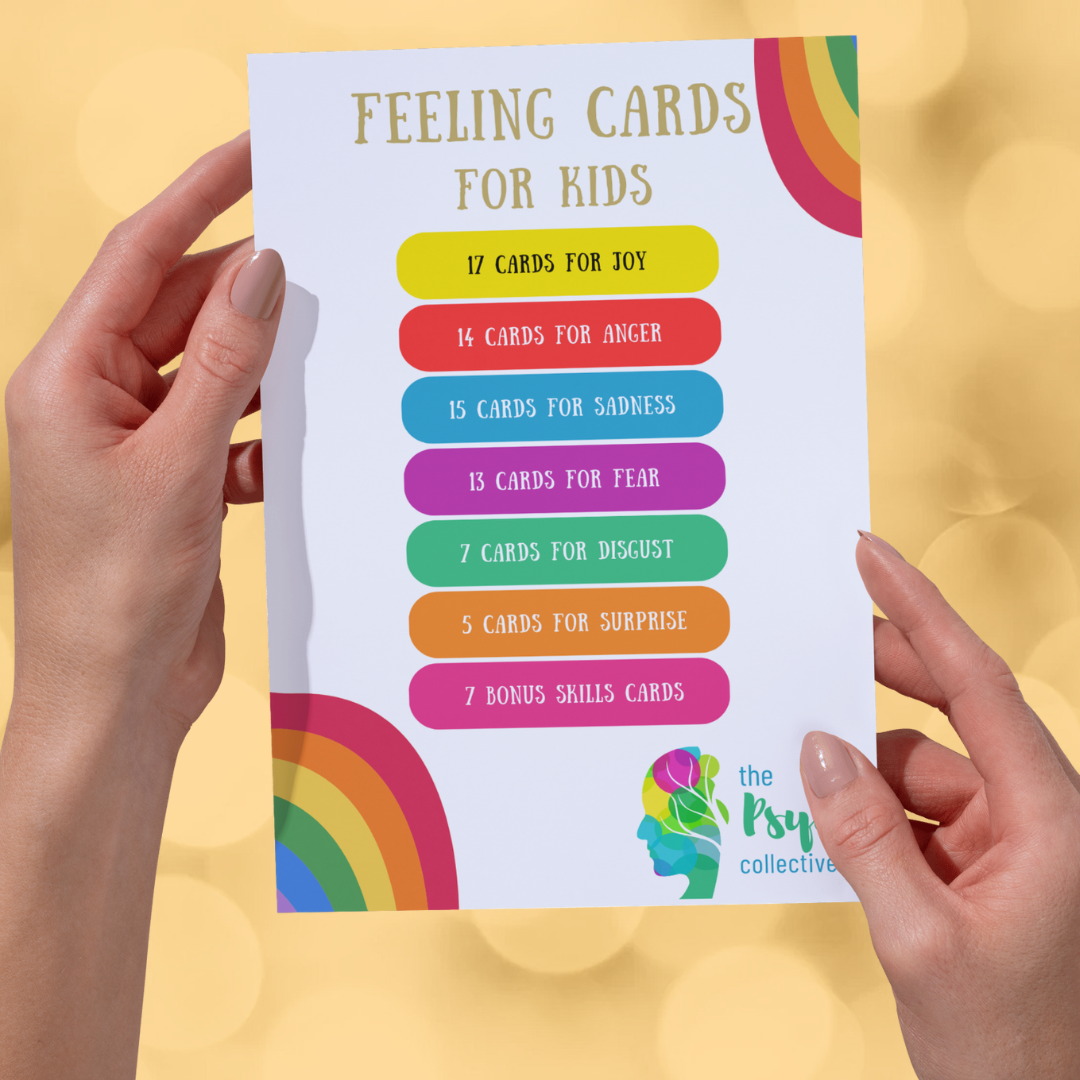List of Core Emotional Needs
Everyone has needs. We talk about them all the time in Schema Therapy, but what do they really mean? In this 3 minute video, Jess gives a quick overview of the 5 categories of needs.
There are five core emotional needs that are necessary for healthy emotional development in children.
1. The Need for Secure Attachment
Secure attachment is vital for the healthy emotional development of children. When children form secure attachments with their primary caregivers, they develop a sense of trust, safety, and emotional stability. Securely attached children feel confident to explore the world, knowing that they have a secure base to return to. This foundation allows them to build positive relationships, regulate their emotions, and develop healthy coping strategies. Securely attached children also develop a stronger sense of self-worth and empathy, as they have experienced consistent and responsive care. The emotional security provided by a secure attachment helps children navigate challenges, manage stress, and develop resilience. Ultimately, secure attachment lays the groundwork for healthy social, emotional, and psychological well-being throughout their lives.
2. The Need for Autonomy
Autonomy plays a crucial role in promoting healthy emotional development in children. It refers to the ability to make independent choices, exercise personal agency, and develop a sense of self-identity. When children are given opportunities to make decisions and take responsibility for their actions within age-appropriate boundaries, they develop a sense of competence and self-confidence. Autonomy allows children to explore their interests, discover their strengths, and learn from their mistakes. It fosters a sense of ownership over their lives and helps them develop a healthy self-esteem. Moreover, autonomy allows children to express their individuality, preferences, and emotions, leading to a greater understanding and acceptance of themselves. By encouraging autonomy, caregivers provide a nurturing environment that supports children's emotional well-being, promotes self-regulation, and lays the foundation for their independence and resilience in adulthood.
3. The Need for Boundaries
Boundaries play a crucial role in fostering healthy emotional development in children. Establishing clear and consistent boundaries provides children with a sense of safety, predictability, and structure. Boundaries help children understand acceptable behaviour, develop self-discipline, and learn to respect the rights and boundaries of others. By setting limits, caregivers teach children about personal space, privacy, and appropriate social interactions. Boundaries also promote emotional regulation by providing a framework within which children can express their feelings in a safe and healthy manner. Additionally, boundaries teach children important life skills such as responsibility, self-control, and delayed gratification. They help children develop a strong sense of self and establish healthy relationships based on mutual respect and understanding. Ultimately, boundaries create a supportive environment that allows children to thrive emotionally, nurturing their self-esteem, independence, and emotional resilience.
4. The Need for Freedom to Express
The freedom to express oneself is of paramount importance for healthy emotional development in children. When children are encouraged and supported to express their thoughts, feelings, and ideas, they develop a strong sense of self-awareness and emotional intelligence. The ability to openly communicate their emotions fosters a deeper understanding of their own inner world, enabling them to better navigate and regulate their emotions. By being given the freedom to express, children learn to validate their own experiences and develop a sense of self-worth and confidence. It also enables them to develop effective communication skills, assertiveness, and problem-solving abilities. Furthermore, when children are allowed to express themselves freely, they feel heard, understood, and validated, which builds a foundation of trust and connection with their caregivers and peers. Embracing and honouring the freedom of expression in children creates an environment that promotes emotional well-being, authentic self-expression, and healthy relationships throughout their lives.
5. The Need for Play
Play and spontaneity are vital for healthy emotional development in children. Through play, children engage in activities that are intrinsically motivated, enjoyable, and imaginative. It allows them to explore their creativity, develop problem-solving skills, and foster their cognitive, physical, and social development. Play also provides a safe space for children to express and process their emotions. It offers an outlet for them to experiment with different roles and emotions, helping them develop empathy, emotional regulation, and resilience. Moreover, play and spontaneity promote a sense of joy, curiosity, and wonder in children's lives, fostering a positive outlook and enhancing their overall well-being. By engaging in unstructured and spontaneous play, children learn to navigate uncertainties, adapt to new situations, and develop their own interests and passions. It encourages their independence, self-confidence, and autonomy. Overall, play and spontaneity contribute significantly to the healthy emotional development of children by nurturing their creativity, emotional intelligence, and overall happiness.
To download the handout for this, go to our Resources page. It's free!
Share
Categories
About Our Resources
We offer actionable resources and teach real skills to help people make meaningful change in managing mental health issues through different modes depending on people's learning preferences including infographics, text, worksheets, handouts and video.













